Brugmansia Cold Tolerance: How Cold Can Brugmansias Get
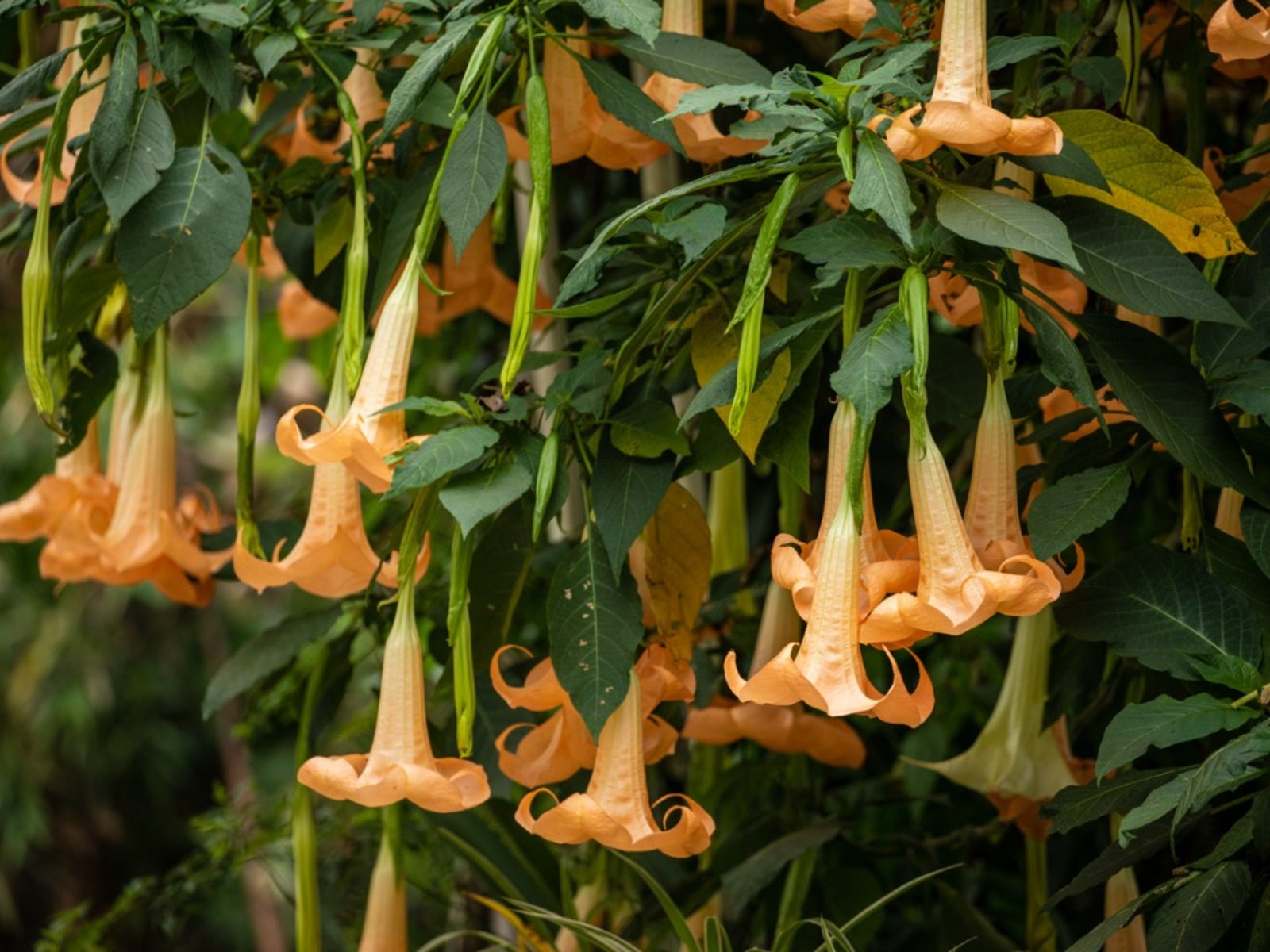

Once the sun comes out and the temperatures warm up, even temperate and northern gardeners get bit by the tropical bug. Garden centers know you are craving plants that scream sunshine, warm beaches, and exotic flora, so they stock tropical and semi-tropical plants that won't have a chance of living through your winters. Brugmansia is one of these species. How cold can Brugmansias get and still survive? The United States Department of Agriculture sets Brugmansia cold hardiness in zones 8 to 11.
Brugmansia Cold Tolerance
One of the most dramatic plants is Brugmansia. Also known as Angel Trumpets, Brugmansia is a shrub-like tropical perennial in warm zones but is grown as an annual in cold climates. This is because there are not hardy, and the plants cannot withstand cold temperatures. The plants can be overwintered indoors with reasonable success, so you can save them and have another chance at viewing the tremendously large hanging blooms in your landscape. This plant is not considered a hardy plant, which means it cannot withstand freezing temperatures. While the zones the plant can live in are 8 to 11, Brugmansia cold tolerance in zone 8 is marginal with some shelter and deep mulching, as temperatures may get down to 10 or 15 degrees Fahrenheit (-12 to -9 C.). Zones 9 to 11 stay between 25 and 40 degrees Fahrenheit (-3 to 4 C.). If any freezing occurs in these zones, it is very brief and doesn't usually kill the roots of the plants, so Brugmansia can be left outdoors in winter. Overwintering Brugmansia indoors in any of the lower zones is recommended or the plants will die.
Overwintering Brugmansia
Since there are no truly hardy Angel Trumpets, it is useful to know your zone and take appropriate action in cool regions to save the plant. If you are in an area where temperatures regularly freeze in winter, you need to start tricking the plant into dormancy in late summer to early fall. Stop fertilizing Brugmansia by July and reduce watering in September. Gradually, this will push the plant into a dormant state as temperatures get cooler. Remove 1/3 of the plant material to reduce the possibility of damage during moving and prevent excess moisture loss from transpiration. Before any freezing temperatures are expected, move the plant to a cool, frost free area such as the basement or possibly an insulated garage. Just make sure the area doesn't freeze and temperatures are between 35 and 50 degrees Fahrenheit (1 to 10 C.). During winter storage, water infrequently but keep the soil lightly moist. Once temperatures begin to warm up, bring the plant out of the area in which it has been hiding and gradually introduce it to brighter and brighter light. Container plants will benefit from repotting and new soil. Harden off the plants before putting them outside. Over the period of several days reintroduce the plants to outdoor conditions, such as wind, sun, and ambient temperatures, then plant them in the ground or leave the containers outside when nighttime temperatures do not fall below 35 degrees Fahrenheit (1 C.). Once you see new growth, begin fertilizing monthly with liquid fertilizer to boost green growth and help form the 6-inch (15 cm.) flowers. Taking a little care to remember Brugmansia cold hardiness zones and get these plants indoors in time before any frosts can ensure that you enjoy them for years and years.
Gardening tips, videos, info and more delivered right to your inbox!
Sign up for the Gardening Know How newsletter today and receive a free copy of our e-book "How to Grow Delicious Tomatoes".

Bonnie Grant is a professional landscaper with a Certification in Urban Gardening. She has been gardening and writing for 15 years. A former professional chef, she has a passion for edible landscaping.
-
 Looking For Plants To Give You The Soft And Fuzzies? Try These 5 Fuzzy Leaf Plant Options
Looking For Plants To Give You The Soft And Fuzzies? Try These 5 Fuzzy Leaf Plant OptionsLovers of texture, drama, silver foliage and tactile plants will adore these special sensory garden additions. These fuzzy leaf plant options will leave you all aglow
By Susan Albert
-
 Get Ready For A Summer Of Hummers! Grow These Full Sun Hummingbird Plants and Flowers
Get Ready For A Summer Of Hummers! Grow These Full Sun Hummingbird Plants and FlowersIf you’re lucky enough to enjoy a sunny backyard, make sure you are maxing out on your pollinator opportunities and grow these full sun hummingbird plants and flowers
By Tonya Barnett
-
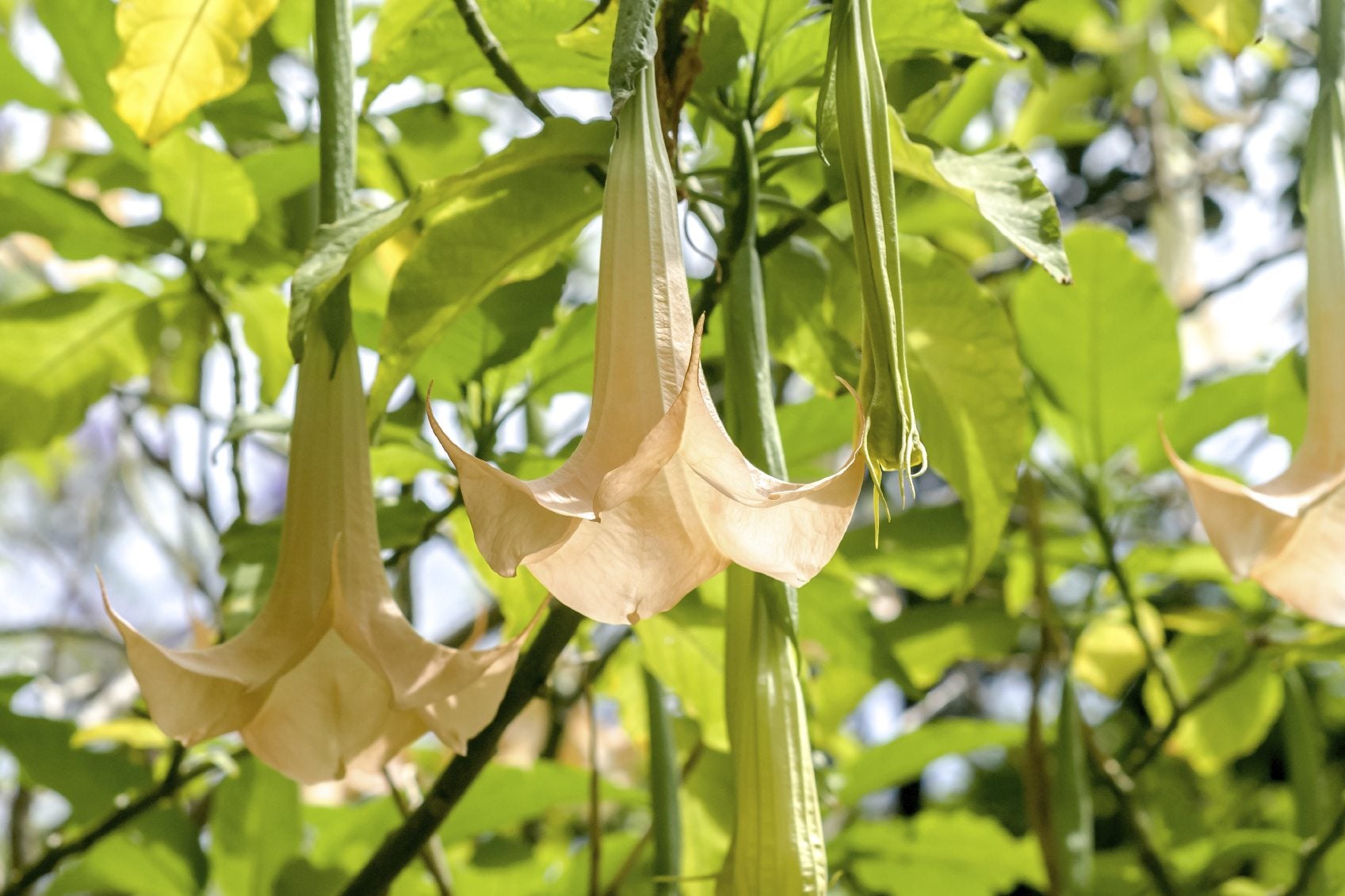 Brugmansia Plant Care: How To Care For Brugmansia In Ground Outside
Brugmansia Plant Care: How To Care For Brugmansia In Ground OutsideGrowing brugmansia in the ground works well in United States Department of Agriculture zones 9 to 12. Try a brugmansia in the garden for show-stopping color and dynamic proportions. This article will help get you started.
By Bonnie L. Grant
-
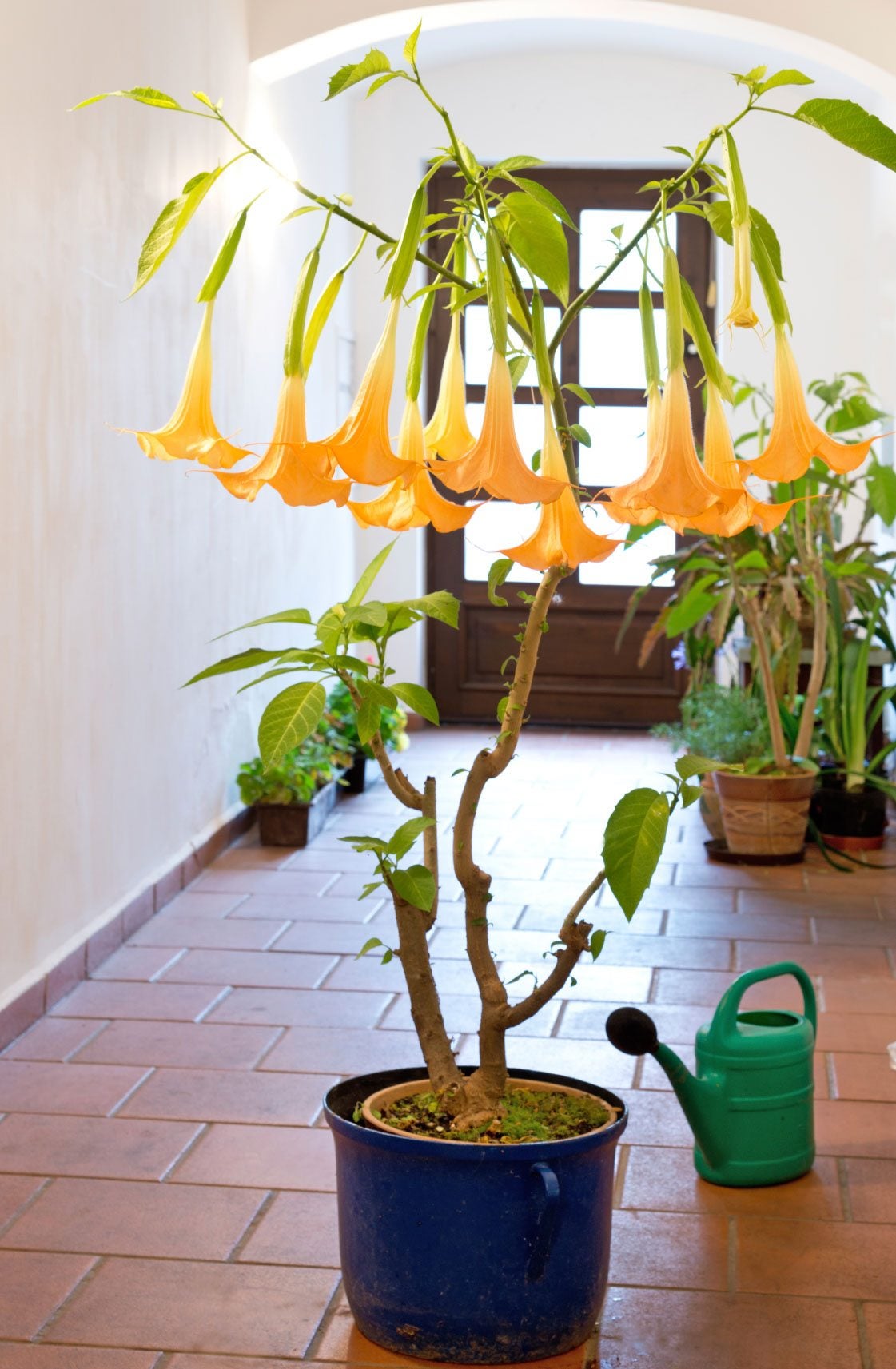 Watering Brugmansia Plants: How Much Water Does Brugmansia Need
Watering Brugmansia Plants: How Much Water Does Brugmansia NeedBrugmansia is a distinctive plant with big leaves and huge, drooping, trumpet-shaped blooms as long as your foot. This flashy tropical plant is surprisingly easy to grow, but it helps to know exactly how to water brugmansias. Click here for more.
By Mary H. Dyer
-
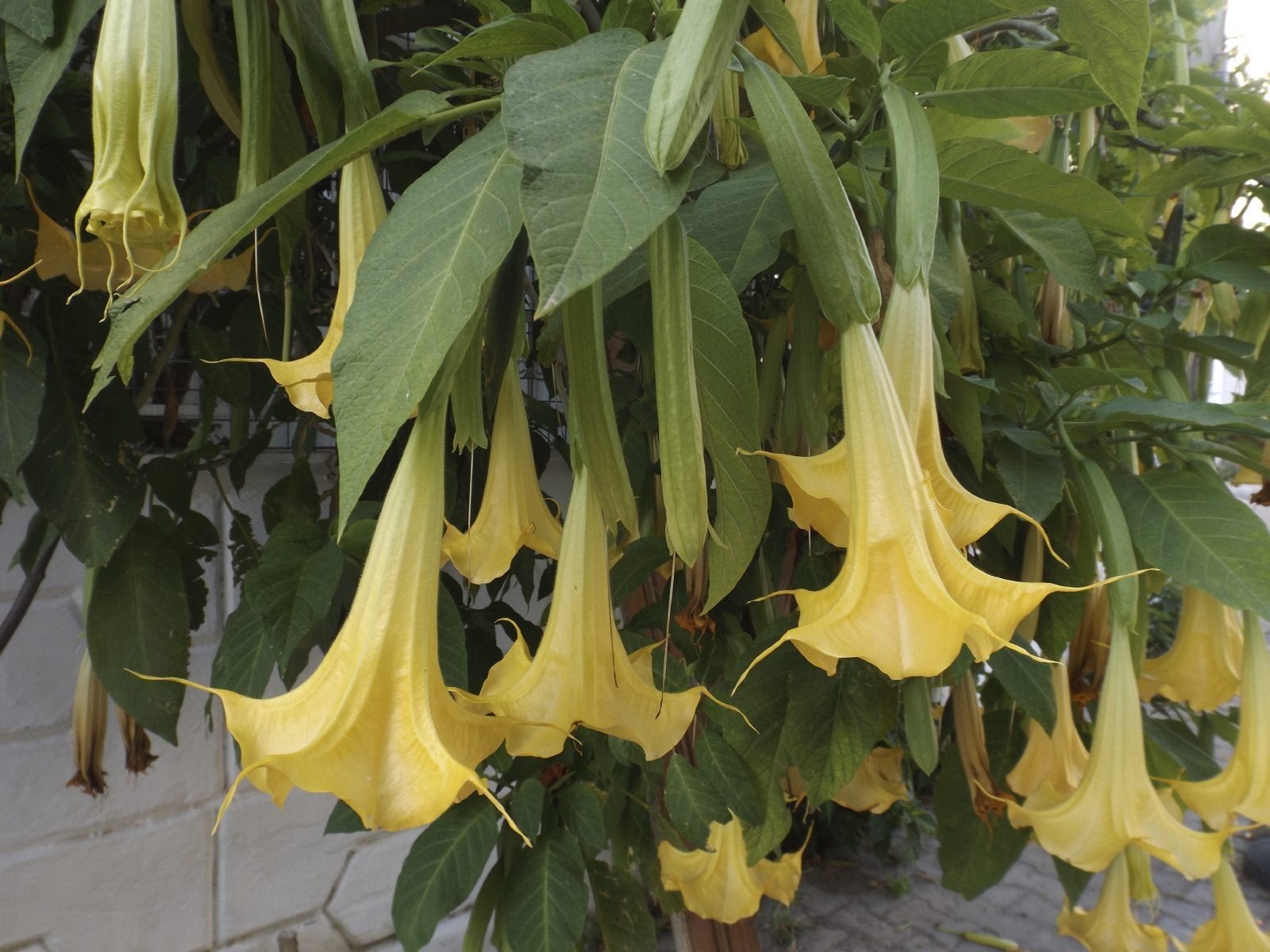 Brugmansia Problems: How To Treat Disease And Pests Of Brugmansia
Brugmansia Problems: How To Treat Disease And Pests Of BrugmansiaAlso known as angel trumpet or simply "brug," brugmansia is a shrubby plant with masses of impressive, trumpet-shaped flowers. While little care is required, pests and diseases may compromise the health and longevity of the plant. Learn more here.
By Mary H. Dyer
-
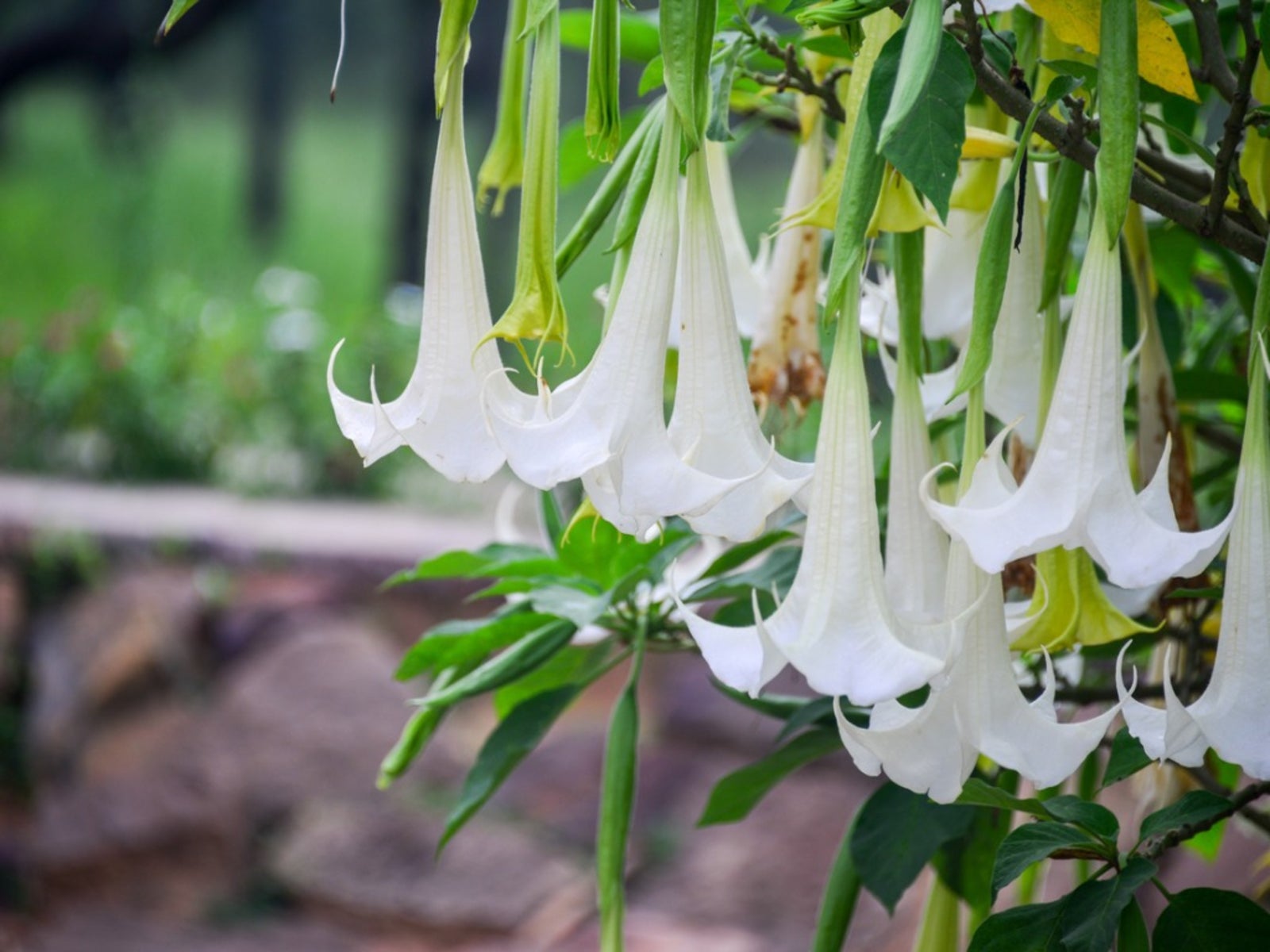 Brugmansia Diseases: Fixing Common Issues With Brugmansia
Brugmansia Diseases: Fixing Common Issues With BrugmansiaIt's never fun to watch a beloved plant fall ill to an unknown disease. Find out more about common brugmansia diseases so you'll be armed and ready should your plant begin to have problems. This article will help.
By Kristi Waterworth
-
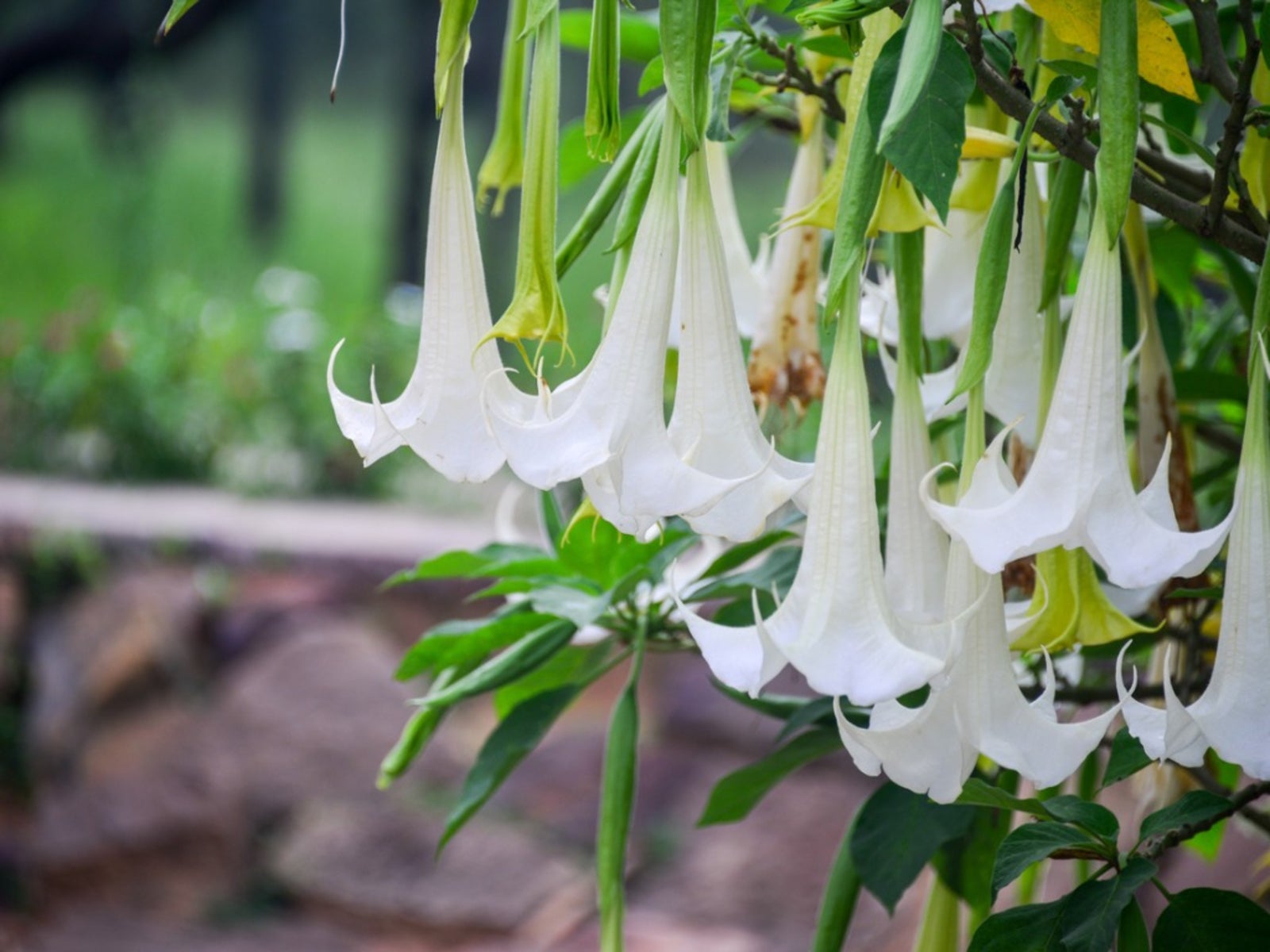 Feeding Angels Trumpet: When And How To Fertilize Brugmansias
Feeding Angels Trumpet: When And How To Fertilize BrugmansiasIf there ever was a flower you just had to grow, brugmansia is it. The plant produces a season long display of trumpet-shaped blooms. Knowing how to fertilize brugmansias will enhance and extend these brilliantly colored flowers. Click here to learn more.
By Bonnie L. Grant
-
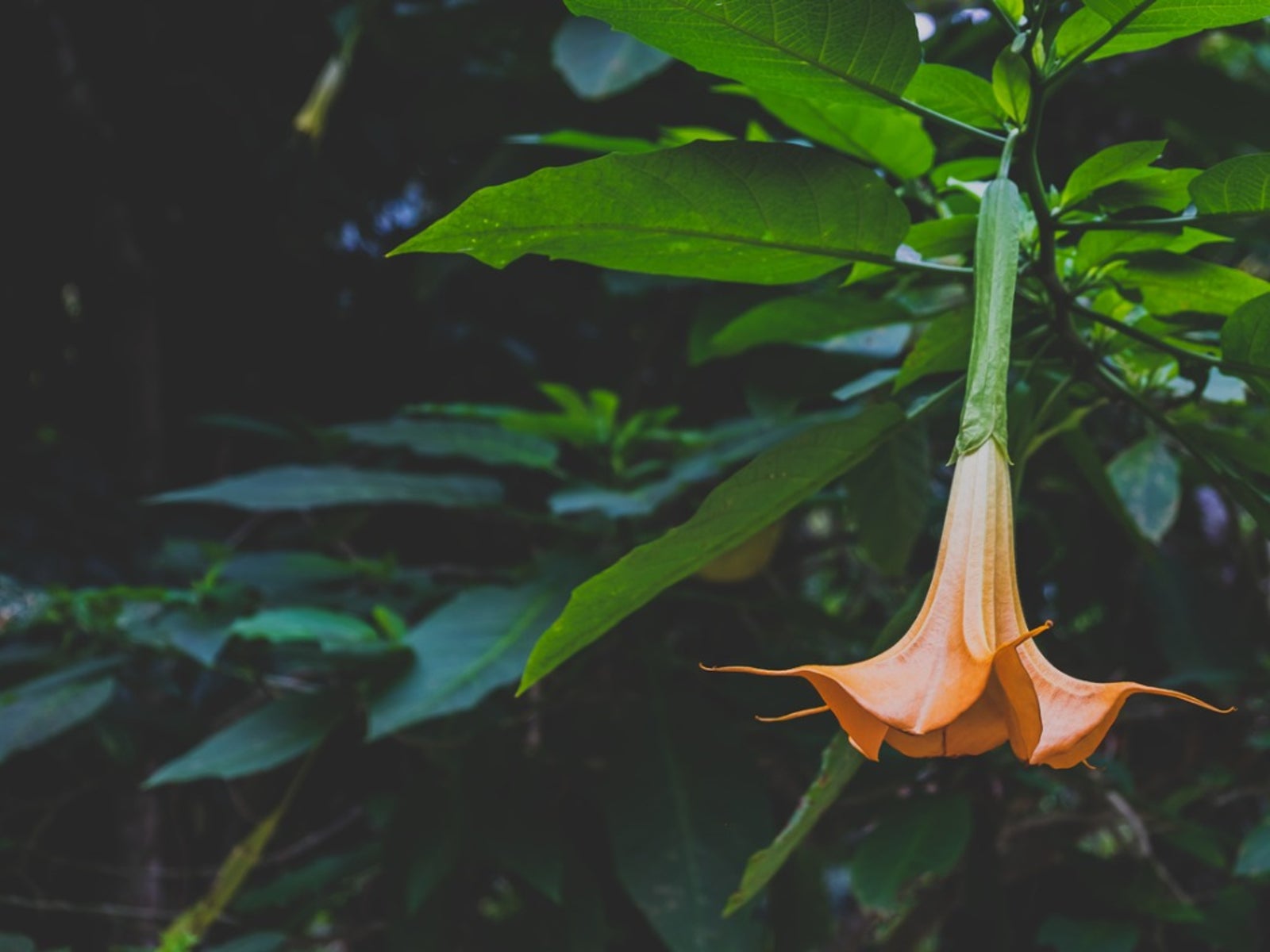 Learn How To Prune Brugmansia Trees
Learn How To Prune Brugmansia TreesBrugmansia plants make attractive specimen plantings. But, in order to keep them looking their best, trimming brugmansia may be necessary. Knowing how to prune brugmansia is important, and this article will help.
By Nikki Tilley
-
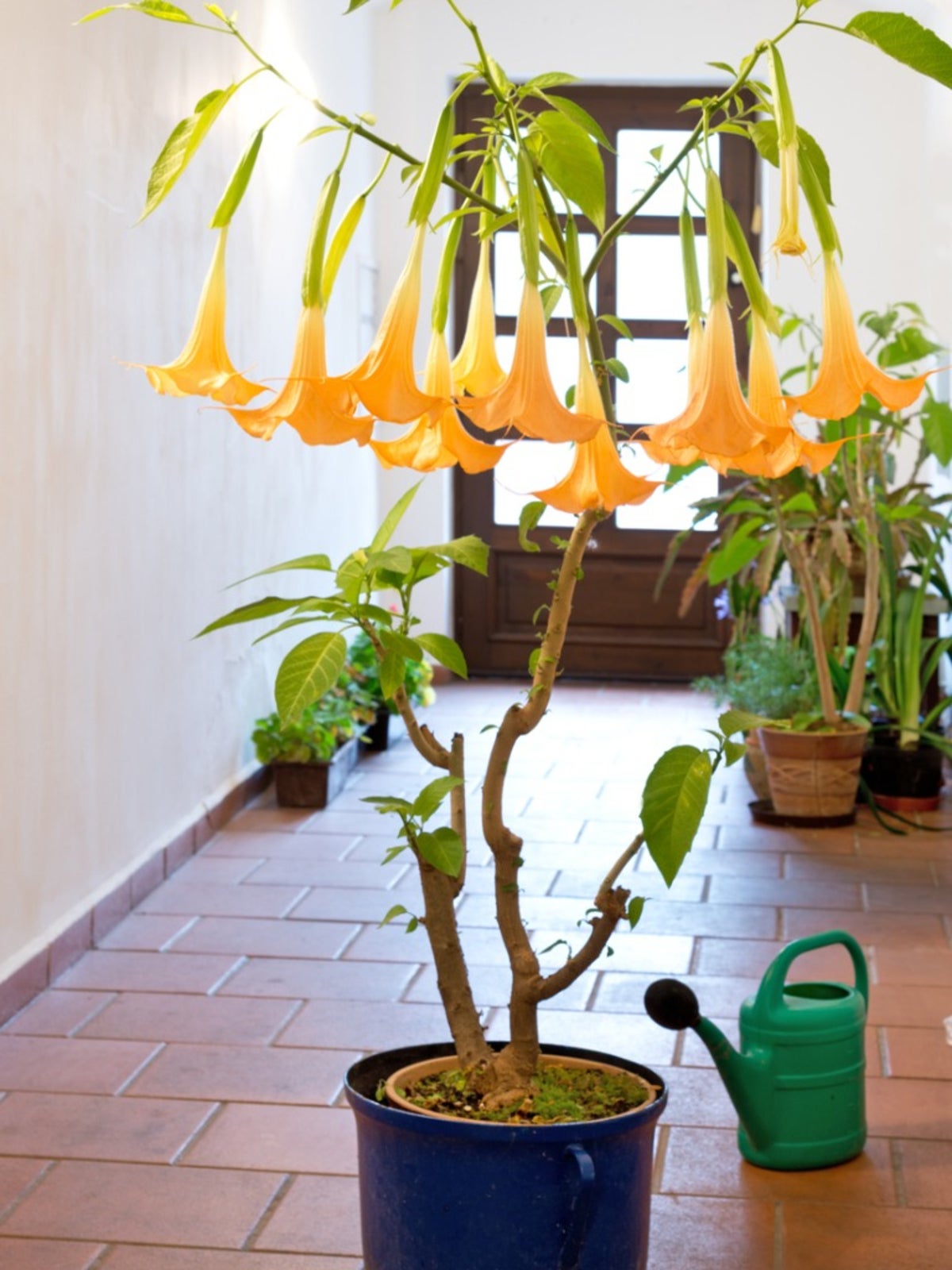 Brugmansia Winter Care - Wintering Brugmansia In Your Home
Brugmansia Winter Care - Wintering Brugmansia In Your HomeWhile most types of brugmansia can thrive outdoors in warm climates, they need to be protected from freezing temps when growing brugmansia in cold climates. Follow the tips here for over-wintering brugmansia.
By Nikki Tilley
-
 Tips For Propagating Brugmansia
Tips For Propagating BrugmansiaBrugmansia is not only easy to grow but propagating brugmansia is easy too. There are three methods of brugmansia propagation - by seeds, cuttings, and air layering. Find the method that works best for you here.
By Nikki Tilley